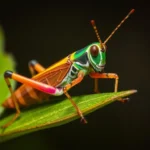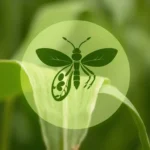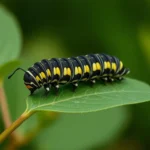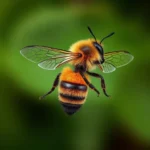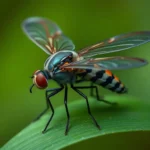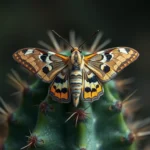The Symbolism of May Beetles: Nature’s Messengers
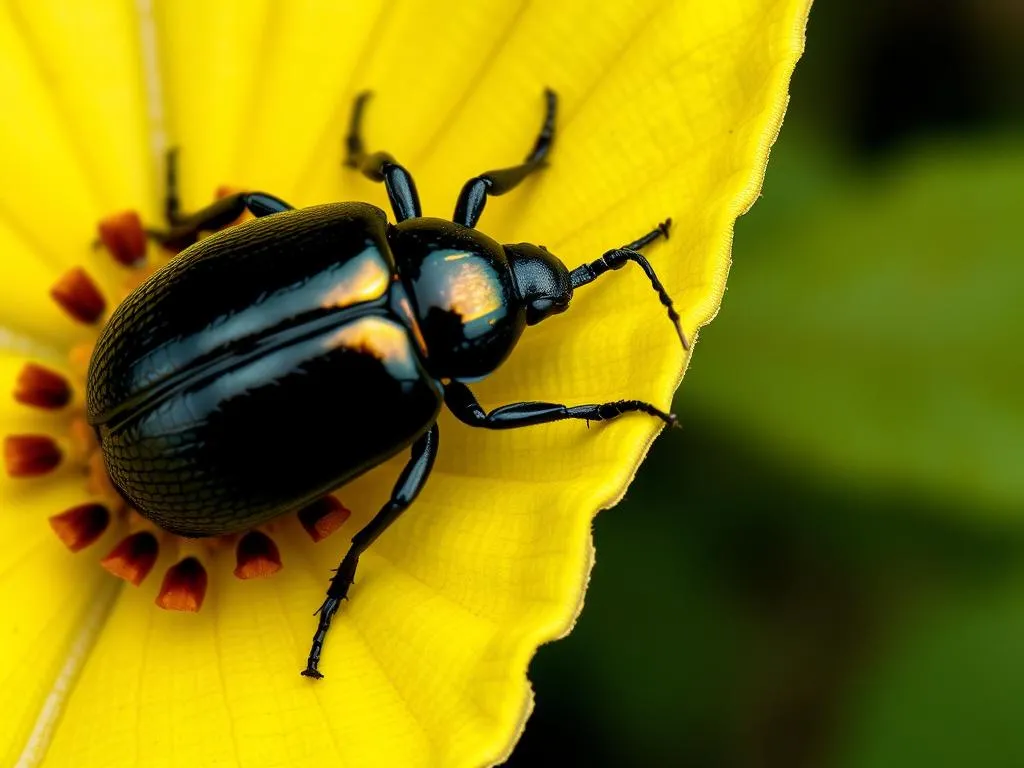
Disclaimer: Some images on this website are AI-generated artworks and may not accurately represent real animals.
Understanding the May Beetle
Species Overview
The May beetle, also known as the June bug, belongs to the family Scarabaeidae and is characterized by its robust, oval shape and shiny exoskeleton. These insects typically range in color from brown to green, with some species exhibiting a metallic sheen. Adult May beetles are usually 0.5 to 1 inch long and are easily recognized by their distinctive, curved bodies and short antennae.
May beetles are most commonly found in North America and Europe, primarily inhabiting wooded areas, gardens, and fields. Their life cycle consists of four stages: egg, larva, pupa, and adult. The eggs are laid in the soil during late spring or early summer, and the larvae, known as grubs, feed on organic matter in the soil for several months before transforming into pupae. By late summer, they emerge as adults, ready to continue the cycle.
Behavior and Characteristics
One of the fascinating aspects of May beetles is their behavior. These insects are primarily nocturnal, displaying increased activity during the warmer months. As dusk falls, they are often attracted to artificial lights, leading to their frequent appearance around homes and gardens. Their flight is erratic, and they can easily be seen fluttering around, especially in May and June, which is how they earned their name.
May beetles feed on the leaves of various plants, which can sometimes lead to significant damage in gardens and agricultural areas. However, they play a vital role in the ecosystem by contributing to the decomposition of organic matter as larvae and serving as a food source for various predators, such as birds and mammals.
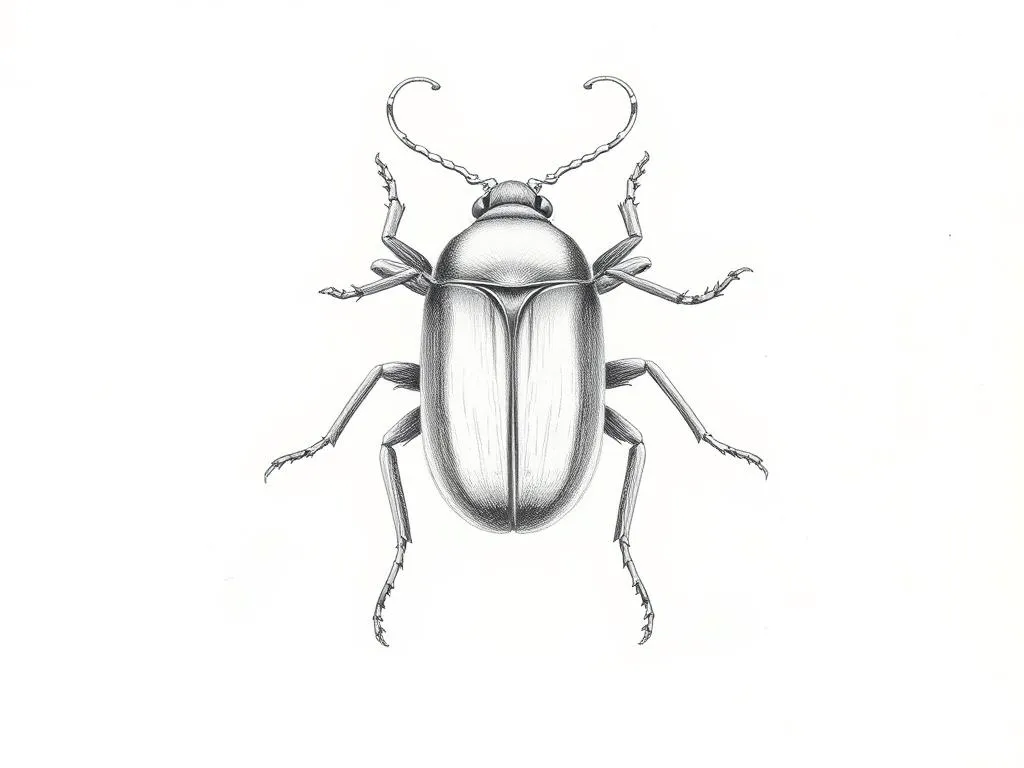
Symbolism & Spiritual Meaning
Transformation and Renewal
The symbolism of May beetles extends beyond their biological traits; they represent transformation and renewal. Just as these insects undergo a complete metamorphosis from egg to adult, they symbolize the potential for personal growth and change. In many cultures, their emergence signals the arrival of spring—a time of rebirth and new beginnings.
May beetles remind us that life is cyclical, with periods of dormancy followed by explosive growth. This concept can resonate deeply with those experiencing transitions in their lives, reminding them that change is often necessary for growth and development.
Connection to Nature
As indicators of environmental health, May beetles serve as a reminder of our connection to nature. Their presence in a garden or landscape can signify a balanced ecosystem. They thrive in environments rich in organic materials, which underscores the importance of maintaining healthy soil and plant life.
In many ways, May beetles embody the delicate interplay between species and their habitats. Their role in pollination and decomposition highlights the interconnectedness of all living things and encourages a greater appreciation for nature’s balance.
Cultural Significance
Throughout history, various cultures have attributed different meanings to the May beetle. In some Native American traditions, they are seen as messengers from the spirit world, symbolizing a connection to ancestral wisdom. Folklore from Europe also associates May beetles with prosperity and good fortune, as their appearance often coincides with bountiful harvests.
In literature and art, May beetles have been depicted as symbols of resilience and adaptability, reflecting the human experience of overcoming obstacles. Their ability to thrive in diverse environments serves as an inspiration for many seeking to navigate life’s challenges.
May Beetles in Dreams
Common Themes
Dreaming about May beetles can hold significant meaning and often reflects themes of growth, transformation, and awareness. Below is a table summarizing common interpretations associated with dreaming about these insects:
| Dream Theme | Interpretation |
|---|---|
| Transformation | Indicates personal growth or significant life changes. |
| Awareness | Suggests a need to pay attention to aspects of your life. |
| Connection with Nature | Reflects a desire for harmony with the natural world. |
| Renewal | Signifies new beginnings or a fresh start in your endeavors. |
Personal Reflection
Encouraging readers to reflect on their own dreams involving May beetles can unveil personal insights. Consider what emotions or thoughts arise when dreaming of these insects. Are you experiencing a period of change in your life? Are there aspects of your environment that require your attention?
By examining these dreams, individuals may find that May beetles symbolize their inner struggles or aspirations. This introspection can lead to deeper self-awareness and a clearer understanding of one’s path forward.
Modern Interpretations
Environmental Symbolism
In contemporary discussions about nature conservation, May beetles have taken on new symbolic meanings. As environmental indicators, their populations can reflect the health of ecosystems affected by climate change and habitat destruction. Increased awareness of their role in the environment highlights the urgent need for ecological balance and sustainability.
The decline in May beetle populations in some regions raises concerns about biodiversity and the impact of human activity on natural habitats. Advocating for their conservation can foster a broader conversation about protecting our environment and preserving the delicate relationships within ecosystems.
Influence on Art and Literature
Throughout history, May beetles have inspired artists and writers alike. Their unique appearance and fascinating life cycle have made them subjects of various artistic interpretations. In literature, they often symbolize resilience and adaptability, mirroring the human experience.
Artists have captured the beauty and intricacies of May beetles in paintings and sculptures, using them as metaphors for transformation and rebirth. This appreciation of nature’s wonders encourages a deeper connection to the world around us, inspiring individuals to find beauty in the seemingly mundane aspects of life.
Key Takeaways
- Symbolism of Transformation: May beetles symbolize personal growth and renewal, reminding us of life’s cyclical nature.
- Environmental Indicators: Their presence reflects the health of ecosystems, emphasizing our connection to nature.
- Cultural Perspectives: Different cultures view May beetles as messengers and symbols of prosperity, highlighting their significance in folklore.
- Dream Interpretations: Dreams about May beetles can signify transformation, awareness, and a desire for connection with nature.
- Artistic Inspiration: May beetles have influenced artists and writers, serving as symbols of resilience and adaptability.
Conclusion
Recognizing the symbolism of May beetles prompts us to reflect on our relationship with nature and the messages it conveys. These insects, with their remarkable life cycles and ecological significance, remind us of the beauty of transformation and the importance of maintaining harmony with the environment.
As we observe May beetles in their natural habitat, we are encouraged to consider what they symbolize in our own lives. By fostering a deeper appreciation for these creatures, we can cultivate a greater respect for the intricate web of life that surrounds us. Embracing the lessons of nature can lead to personal growth and a renewed sense of purpose.
